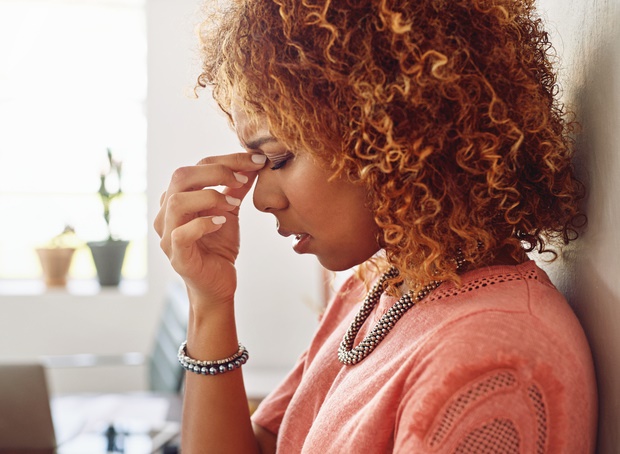
Millions of people worldwide suffer from migraine, most of them women. These pulsing headaches differ from person to person, but are often experienced on one side of the head. Conventional migraine treatment is often ineffective.
A recent Health24 article agrees that migraine patients differ from each other and the drugs that work for some patients are completely inefficient for others.
A wireless arm patch may be a promising new treatment for migraines, researchers report.
Rubber electrodes and a chip in the patch produce electric impulses that block pain signals from reaching the brain, the study authors said.
When a migraine starts, you can control the intensity of the electric impulses using a smartphone app, explained lead researcher Dr David Yarnitsky, chair of neurology at Rambam Medical Centre, in Haifa, Israel.
No side-effects
"You can use skin stimulation at an intensity which is not painful and be able to stop or substantially diminish the development of a migraine attack, as long as you do it early enough in the migraine attack," he said.
"There are no side effects," Yarnitsky added. "You feel a tingle in your upper arm."
Before, when stimulation devices had been tested on migraines, they needed wires and were attached to the head, Yarnitsky said. He is a consultant to Theranica Ltd., the company that makes the device and funded the study.
Yarnitsky said a trial with nearly 200 patients is about to start, and he hopes by next year that the device will be up for approval by the US Food and Drug Administration.
"People with migraine are looking for non-drug treatments, and this new device is easy to use and has no side effects," he said.
The report was published online in the journal Neurology.
Promising results
One neurologist said he was impressed by the findings.
"This treatment looks promising, because side effects are very few and treatment effects are large," said Dr Richard Lipton, director of the Montefiore Headache Centre in New York City.
The brain has an internal system for regulating pain called the chronic pain modulation system, said Lipton, who is also a professor of neurology at Albert Einstein College of Medicine in New York City.
"The idea is that stimulating the arm activates the brain's mechanisms for regulating pain and, in turn, that helps turn off the migraine attack," Lipton explained.
To test the effectiveness of the patch, Yarnitsky and his colleagues tried it on 71 migraine sufferers who had two to eight attacks per month and had not taken any medication to prevent migraine for at least two months.
Participants applied the patch to their upper arm soon after the start of a migraine. They used it for 20 minutes and were not supposed to take any medications for migraine for two hours.
The devices were programmed to randomly give either a sham shock at a very low frequency, or a real one at one of four levels of stimulation. This enabled the researchers to give both real and sham stimulation to every patient.
Sham stimulation
During the trial, nearly 300 migraines were treated with the device. At the three highest levels of stimulation, 64% of people experienced a reduction in pain of at least 50% two hours after the treatment, compared with 26% of those receiving a sham stimulation, the researchers said.
For those with moderate to severe pain, 58% had their pain reduced to mild or no pain when the highest level of stimulation was used, compared with 24% of those receiving sham stimulation, according to the researchers.
Moreover, 30% of those who received the highest level of stimulation reported having no migraine pain, compared with 6% of those receiving the sham stimulation, according to the report.
These results were similar to those seen for people taking triptan medications such as Axert and Frova for migraine, Yarnitsky said.
The treatment is most effective when started within 20 minutes of the first signs of a migraine, he said.
When treatment began early, 47% of the patients had a reduction in pain, compared with 25% when stimulation was started after 20 minutes, the investigators found.
Put your questions about headaches or migraines to Dr Elliot Shevel, Health24's headache expert.
Read More:
Placebos may work as well as drugs for childhood migraines
The link between PMS and migraines
Vitamin supplementation may help prevent migraines




 Publications
Publications
 Partners
Partners
















